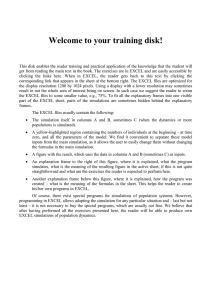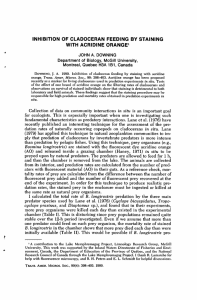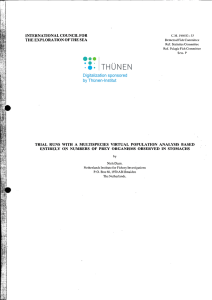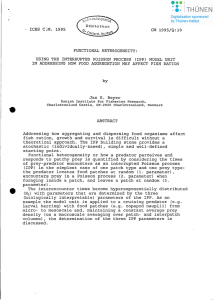An Analysis of Predator and Prey Models with Mulitple Patches... Migratory Assumptions Bernardo Cunha and Chrissy Donovan
advertisement
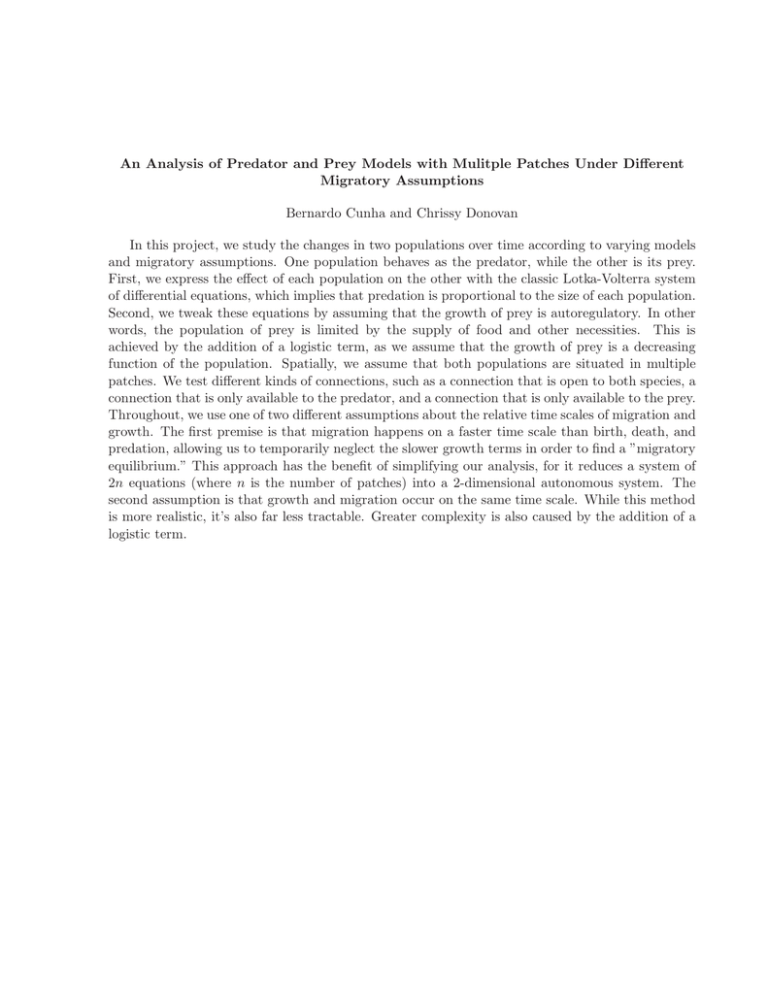
An Analysis of Predator and Prey Models with Mulitple Patches Under Different Migratory Assumptions Bernardo Cunha and Chrissy Donovan In this project, we study the changes in two populations over time according to varying models and migratory assumptions. One population behaves as the predator, while the other is its prey. First, we express the effect of each population on the other with the classic Lotka-Volterra system of differential equations, which implies that predation is proportional to the size of each population. Second, we tweak these equations by assuming that the growth of prey is autoregulatory. In other words, the population of prey is limited by the supply of food and other necessities. This is achieved by the addition of a logistic term, as we assume that the growth of prey is a decreasing function of the population. Spatially, we assume that both populations are situated in multiple patches. We test different kinds of connections, such as a connection that is open to both species, a connection that is only available to the predator, and a connection that is only available to the prey. Throughout, we use one of two different assumptions about the relative time scales of migration and growth. The first premise is that migration happens on a faster time scale than birth, death, and predation, allowing us to temporarily neglect the slower growth terms in order to find a ”migratory equilibrium.” This approach has the benefit of simplifying our analysis, for it reduces a system of 2n equations (where n is the number of patches) into a 2-dimensional autonomous system. The second assumption is that growth and migration occur on the same time scale. While this method is more realistic, it’s also far less tractable. Greater complexity is also caused by the addition of a logistic term.








